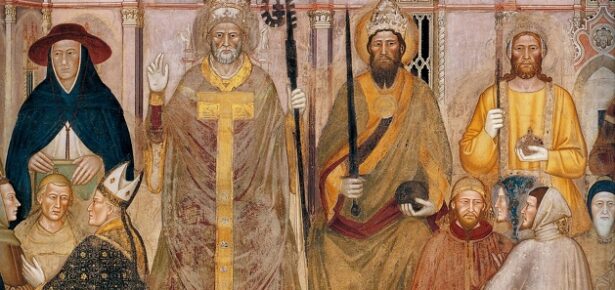
The medieval Mediterranean was a sea of exchange of cultures, religions, commodities, and worldviews. With a focus on monumental and panel painting, Italy, Cyprus, and Artistic Exchange in the Medieval Mediterranean probes issues of cultural transmission through a comparative and interdisciplinary perspective. It is a product of almost ten years of research; it began as a doctoral dissertation and transformed and evolved through time, beyond the years of my PhD. How did the migration of a group of “Latin” (Roman Catholic) nuns from the Holy Land to southern Italy contribute to the visual and stylistic congruities in artworks ranging all the way from Acre to Matera? Why are a Greek-rite nun and a “Latin” clergyman displayed together on an Apulian panel of the Virgin and Child? Who and why chose to sponsor a chapel dedicated to Saint Thomas Aquinas in the Cathedral of Nicosia, a sophisticated saint whose cult was constrained to Dominican circles? What is a Lusignan king of Cyprus doing in Santa Maria Novella among other celebrities such as Dante and the Pope? What some seemingly insignificant panels can tell us about the cultural contacts between Venice and Cyprus and the people who made and used them? The book examines highly intricate cultural entanglements in a world without museums, galleries, the press, and the internet.
In this monograph, I map out the social, cultural, religious, and mercantile encounters between Italy and Cyprus in around 1200-1400, uncover their complex artistic contacts and situate them within more extensive and plural Mediterranean contexts. Readers will come across the rich but understudied cultural exchange between southern Italy, Cyprus, and the Holy Land in the thirteenth century. They will learn, among others, about fascinating wall paintings in rock-cut churches and enigmatic panels in Apulia and Basilicata, and painted churches in Cyprus, Lebanon, and Syria. They will also read about the implementation and manifestation of the cult of Saint Thomas Aquinas in Cyprus, the long voyages of Crusader King Peter I Lusignan to Italy and his inclusion in the painting programme of the Chapterhouse of Santa Maria Novella in Florence, and a unique series of icons crafted by Venetian painters in Cyprus in the fourteenth century.
But how did I end up undertaking a research project on this topic? I was first trained as an art historian of Byzantine art, with a focus on what we conventionally call post-Byzantine painting (i.e., the art produced after the Ottoman conquest of Constantinople in 1453). While writing my dissertation for my MPhil in Byzantine Art on a sixteenth-century chapel, teeming with wall paintings highly inspired by Italian trecento art, I developed a strong interest in Italian painting of the Late Middle Ages. I wanted to further explore this exciting new research path and focus on Italian art of the thirteenth and fourteenth centuries in a more dedicated manner. An MLitt in Medieval and Renaissance Italian art, along with semester-long stays in Siena and Rome, and long trips to Apulia, Basilicata, and Cyprus, shaped the idea of the project. In a way, it was almost inevitable to eventually write a book combining my research ventures in both Byzantine and Italian studies.
Latest Comments
Have your say!